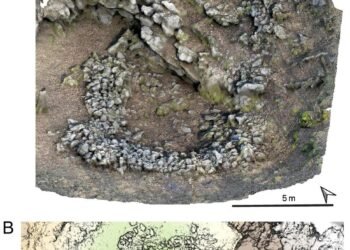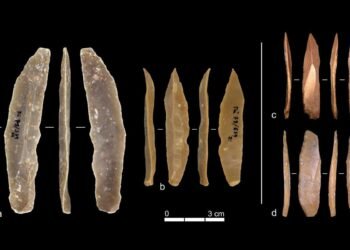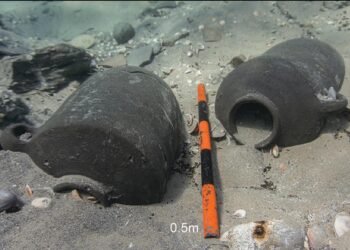In a recent archaeological excavation linked to the renovation of the Kindermanngasse elementary school, Vienna has unveiled a treasure trove of historical artifacts, shedding light on the city’s deep-rooted Roman and medieval history.

The excavations in the inner courtyard of the school, located at 1170 Kindermannstrasse, have exposed significant findings that trace the origins of Vienna, formerly known as Vindobona, back to the 1st century CE.
The ongoing renovations of the Kindermanngasse Elementary School, the fourth oldest school in Vienna, have provided a unique opportunity for archaeologists to delve into the city’s past. The excavations, set to conclude in early February, have unearthed remnants of a production pavilion intricately connected to a Roman furnace. Preliminary evaluations suggest that this structure, discovered in the central area of the city, could be linked to the XIII Legio Gemina, a military unit founded by Julius Caesar.
Among the remarkable discoveries in the inner courtyard, a pit yielded numerous stamped bricks with the seal of Legio XIII Gemina, dating between 98-101 CE. These bricks were specifically crafted to construct pillars used in underfloor heating systems.

The small pillars, known as “suspensurae,” were instrumental in creating a raised floor in thermal rooms, circulating hot air and smoke from the praefurnium to heat houses or baths. The excavation team believes that these bricks were intended for the thermal rooms of the fort or possibly an officer’s residence.
The Legio XIII Gemina, known as the “twin legion,” played a pivotal role in Roman history. Originally founded by Caesar, it earned its cognomen Gemina after being reinforced with veteran legionaries from other legions following the Battle of Actium.
Vindobona, Vienna’s ancient name, served as one of the bases for Legio XIII Gemina, strategically located on the Danube, marking the border between the Roman Empire and Germanic tribes.
The excavations have revealed not only the Roman fort but also associated civilian and military settlements that, at their peak, housed around 30,000 people. The Roman presence endured for approximately 350 years from the early 1st century.
Furthermore, the archaeological team uncovered post structures belonging to a wooden building from the first half of the 2nd century. Initial planimetric studies indicate that these structures were part of the legion’s fortifications.
The Kindermanngasse excavation has also unveiled artifacts from the medieval period, dating from 1050 to 1250. Among the discoveries are beam graves, column remnants, and an earth cellar with preserved stairs and wall installations. This medieval chamber is believed to have served as a storage space for essential supplies.
These excavations contribute to a deeper understanding of urban planning, architecture, and daily life in ancient Vienna.






















